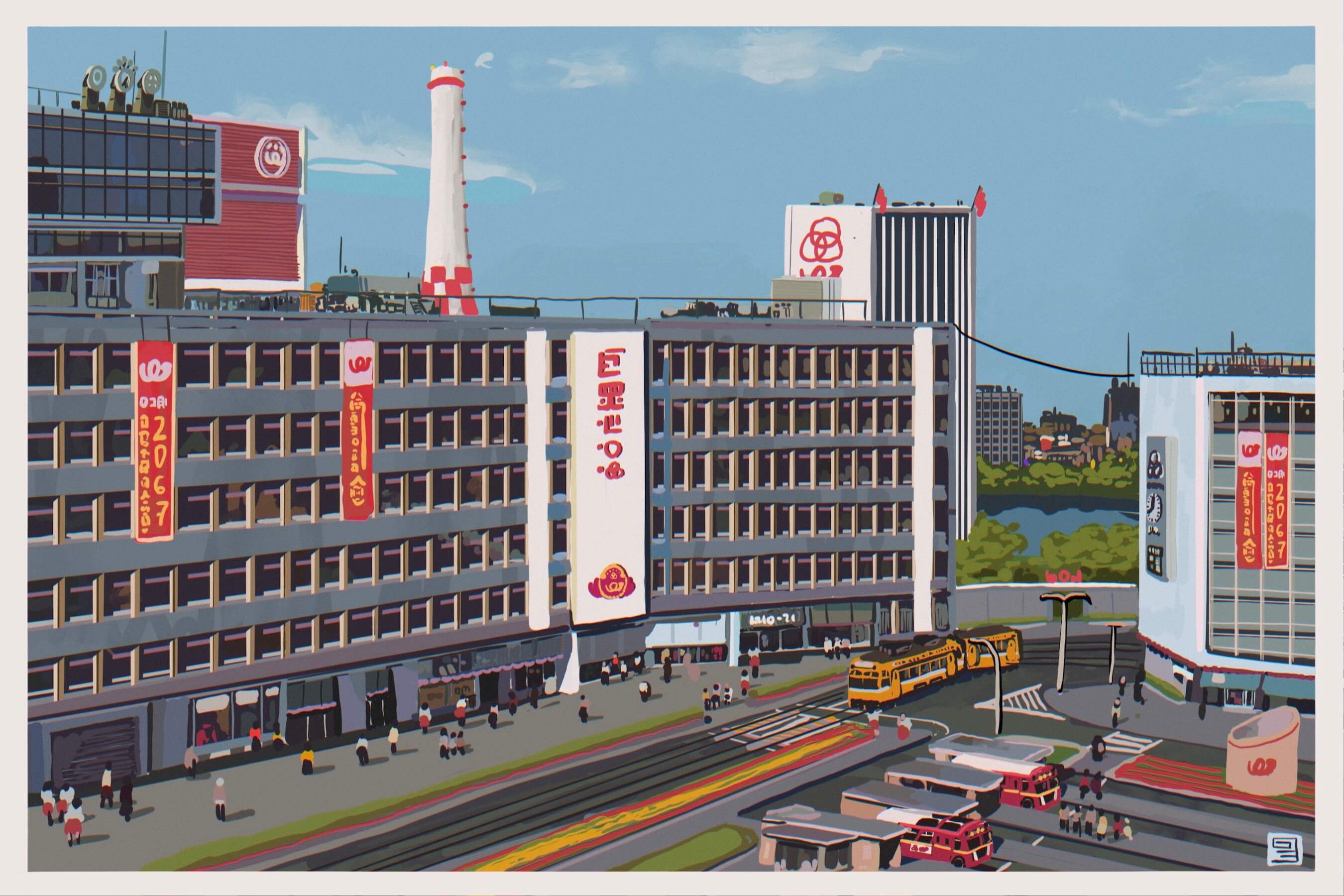NEW Story: Cocktail
The Stamp Manufacturie

✿ This article was part of Vekllei’s Mail Week in February 2021
The Stamp Manufacturie of the Royal Mail Press, located on 5th Avenue, churns millions of stamps a year out of its massive drum presses. Stamps are used on mail instead of postcodes, and as payment for the international and courier work the Royal Mail does abroad. Since Vekllei does not use money domestically, Vekllei people do not pay for postage and stamps are used in the automatic sorting system to determine the destination for any Vekllei territory, including its arctic, peripheral and antarctic possessions.
The main factory, seen here, is an original Newda building in the simple, postwar style common in the time it was built. The street and loading area it looks over is actually just one part of the Royal Mail headquarter complex, and the surrounding city blocks have slowly been claimed for the Mail’s singular mission: reliable post for Vekllei people, anywhere in the world. In the background, the Mail Tower, so it’s called, punctuates the mid-rise skyline of the Capital. The tower is actually a vestigial artefact of a military telecommunications facility, now home to the Mail’s Office of Telecommunications.
At street level, pedestrians can take lunch at the Royal Mail Press Cafeteria, tour the Royal Vekllei Philatelic Museum, or take a monorail to the Royal Mail Post Office General, where the organisation is administrated. Like many State Requisite manufacturers, these facilities are available to the public via tours, which make common day trips for the unburdened Vekllei worker/holidaymaker.
Let’s take a closer look at why the The First Post Office of the Royal Vekllei Mail looks the way it does.
Vekllei has throughout much of its history evolved outside of Western rationalism, and this incurs all sorts of peculiarities in its public life, not least of which its affection for the perceptual, affective, natural and other unsentimental artefacts of pre-rational thought. For Vekllei people, art is just the decoration of ordinary life. In architecture, this is catastrophic; buildings in Vekllei are not “projects,” and they have no “subject” that centres its design. This has resulted in the bizarre manifestation of a sort of postwar postmodernism, rooted in Upen and valorised by Vekllei Metaphysics, in which informal poststructural utopianism is projected onto the objects — in this case, buildings and factories — of ordinary life.
Vekllei modernism is basically utopian. Not utopian in the way this whole project is; as a peculiar expression of being — but utopian in its unabashed projection of texture and emotion in place of an authentic art-form. Newda is utopian in the sense that buildings are not art-objects, and they serve a rational purpose agnostic to subjectivity. Newda is also unsentimental, as art is merely the decoration of ordinary life in Vekllei, not dissimilar to language or cooking. It is obvious, then, that architecture and art have been separated intentionally in Vekllei.
Newda is the face of this cultural legacy, and despite its poststructural origins, is deeply modernist in appearance. It is styled in the instinct of the postwar period, as symbolic of recovery and wealth. It gives very little concern to imitation of past styles or structural gimmicks — it prioritises geometry, cleanliness, “the human face” (meaning original human construction; not biomimicry) and dependence on place. Although influenced by experiments in modernism in France and the United States, it is mostly indigenous and isolationist today, as the rest of the world rumbles amidst yet another crisis of architecture.